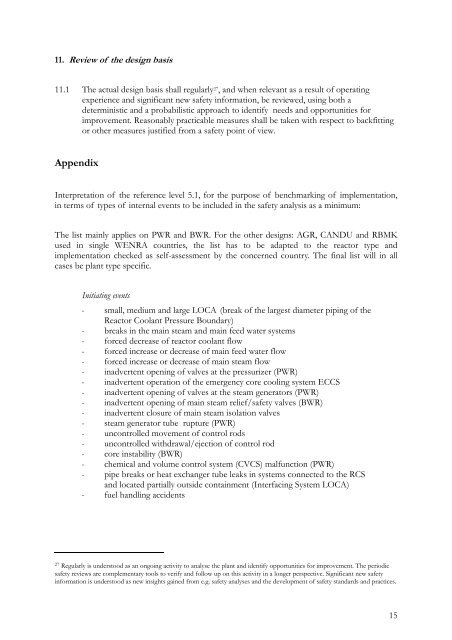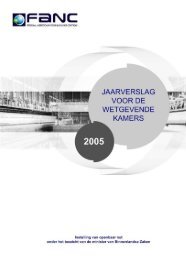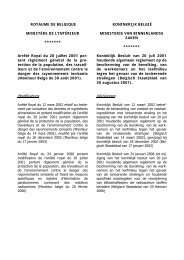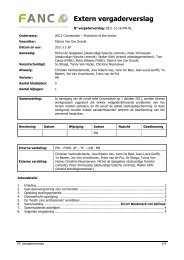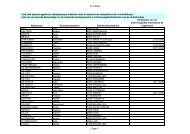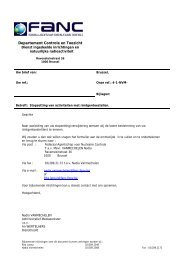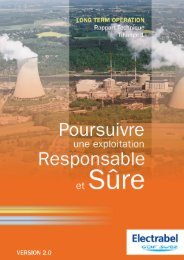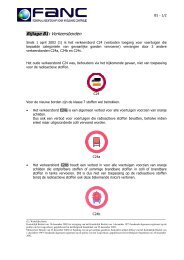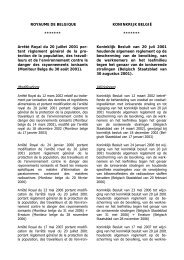WENRA Reactor Safety Reference Levels January 2007
WENRA Reactor Safety Reference Levels January 2007
WENRA Reactor Safety Reference Levels January 2007
You also want an ePaper? Increase the reach of your titles
YUMPU automatically turns print PDFs into web optimized ePapers that Google loves.
11. Review of the design basis11.1 The actual design basis shall regularly 27 , and when relevant as a result of operatingexperience and significant new safety information, be reviewed, using both adeterministic and a probabilistic approach to identify needs and opportunities forimprovement. Reasonably practicable measures shall be taken with respect to backfittingor other measures justified from a safety point of view.AppendixInterpretation of the reference level 5.1, for the purpose of benchmarking of implementation,in terms of types of internal events to be included in the safety analysis as a minimum:The list mainly applies on PWR and BWR. For the other designs: AGR, CANDU and RBMKused in single <strong>WENRA</strong> countries, the list has to be adapted to the reactor type andimplementation checked as self-assessment by the concerned country. The final list will in allcases be plant type specific.Initiating events- small, medium and large LOCA (break of the largest diameter piping of the<strong>Reactor</strong> Coolant Pressure Boundary)- breaks in the main steam and main feed water systems- forced decrease of reactor coolant flow- forced increase or decrease of main feed water flow- forced increase or decrease of main steam flow- inadvertent opening of valves at the pressurizer (PWR)- inadvertent operation of the emergency core cooling system ECCS- inadvertent opening of valves at the steam generators (PWR)- inadvertent opening of main steam relief/safety valves (BWR)- inadvertent closure of main steam isolation valves- steam generator tube rupture (PWR)- uncontrolled movement of control rods- uncontrolled withdrawal/ejection of control rod- core instability (BWR)- chemical and volume control system (CVCS) malfunction (PWR)- pipe breaks or heat exchanger tube leaks in systems connected to the RCSand located partially outside containment (Interfacing System LOCA)- fuel handling accidents27 Regularly is understood as an ongoing activity to analyse the plant and identify opportunities for improvement. The periodicsafety reviews are complementary tools to verify and follow up on this activity in a longer perspective. Significant new safetyinformation is understood as new insights gained from e.g. safety analyses and the development of safety standards and practices.15


